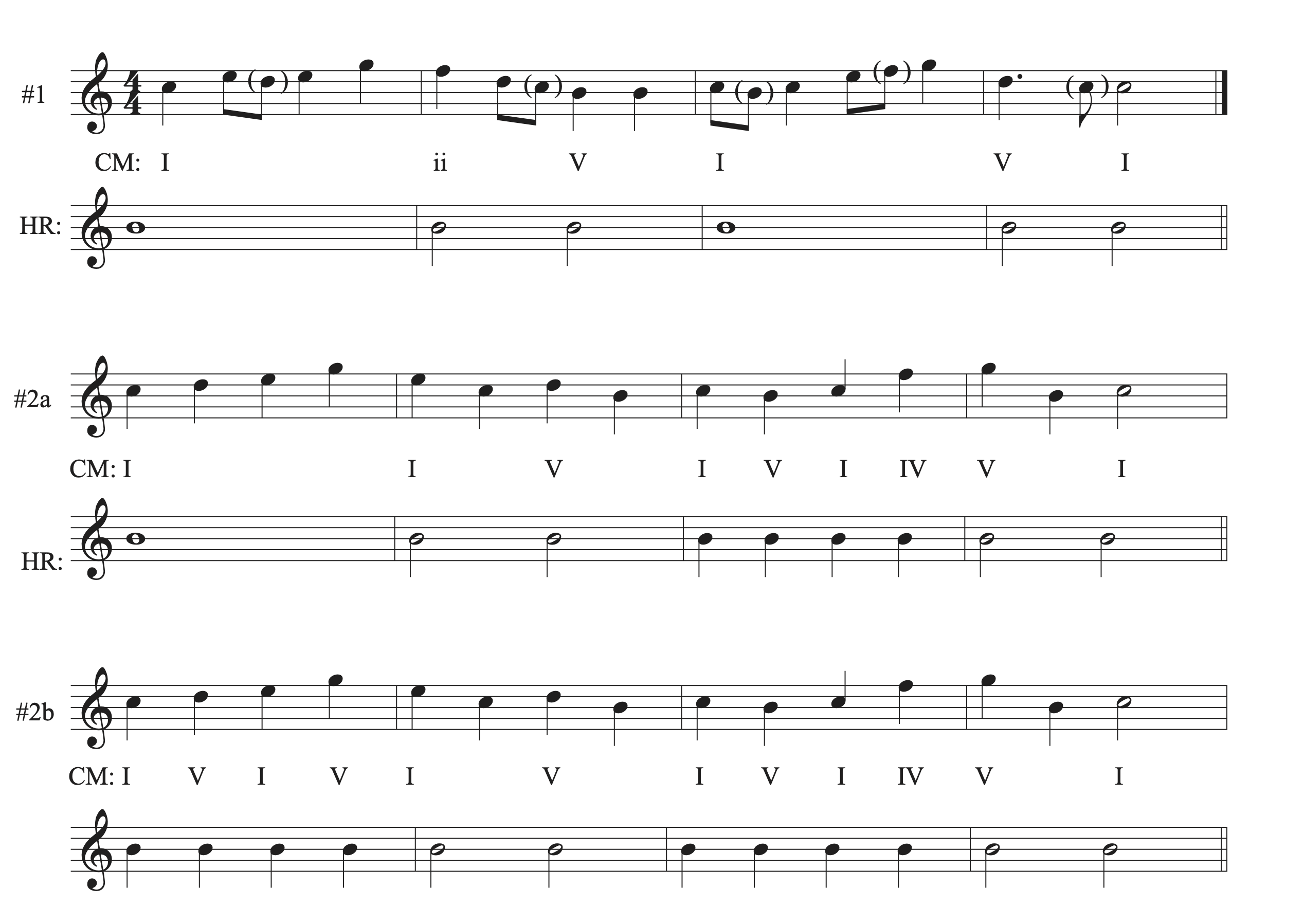11.5 Harmonizing a Melody With Non Chord Tones: Tutorial
Harmonizing a Melody with Non-Chord Tones
When determining the harmonic progression for a given soprano melody, you can choose to have all soprano melody notes be part of a chord, or can decide that some notes are not functioning as chord tones within the soprano melody and should be labeled as non-chord tones. The harmonic rhythm and melodic motion can help you determine what is an is not a chord tone. Look at these three examples.

In the first example, it is easy to see the non-chord tones because they create faster motion than the beat and are typical types of NCTs.
In example #2a, bars 2-4 outline chords, but bar 1 could be a tonic chord for the entire bar if beat 2 is a NCT, or could use a different chord on each beat. The harmonic rhythm is vastly different from the first two bars to the second two bars, and these bars are linked with a progressive cadence. It makes more sense for each note in bar 1 to be a different chord to match the harmonic rhythm of the piece, as illustrated in #2b. When harmonizing a melody, you can use harmonic rhythm to help distinguish between what is a chord tone and what is a non-chord tone. Keep in mind that each non-chord tone you use needs to be a type of non-chord tone used in music. See chapter 7.3 to review non-chord tones.
Whether you choose to have each note of the soprano supported by a chord with non-chord tones added into voices, or choose to include non-chord tones in the soprano melody, the key to harmonizing a melody using non-chord tones is to make sure the part writing is done correctly first, and does not contain errors. Then, non-chord tones can be inserted.
Guidelines to using NCTS when harmonizing a melody
- Part writing must be correct, both without the NCT and with the added NCT. You cannot use a NCT to avoid part writing errors.
- Non-chord tones need to be one of the types found in music:
- Passing tone
- Neighbor tone
- Double neighbor
- Appoggiatura
- Incomplete neighbor
- Escape tone
- Anticipation
- Suspension
- Retardation
- Pedal tone
- Make sure to label all NCTS with parenthesis or a circle around the note or notes that are the non-chords and a label that abbreviates the type of non-chord tone used.
- Do not use more than one NCT in any one spot on or between two chords. It muddies the harmonies and sound, and can create unwanted harmonies.
- Do not add ornaments between the chordal seventh in any seventh chord and its resolution note. It needs to resolve down by step in the same voice to the next chord.
- When adding NCTs to a progression, look for places to use NCTS that have the strictest type of motion first (like suspensions).
- Make sure each NCT added is actually a NCT and is not part of the chord.
Adding non-chord tones allow creativity, motion, and add a personal voice in a composition. Make sure to follow the guidelines outlined as you learn more through further experimentation with NCTS.
Proceed to the theory exercises for a guided example on adding NCTs when harmonizing a melody.

